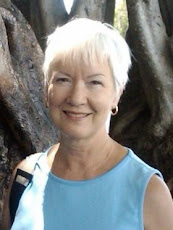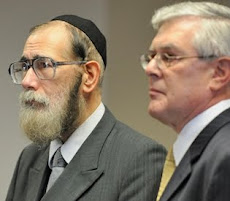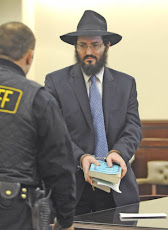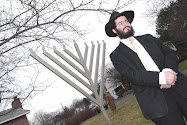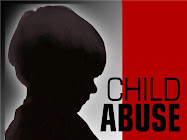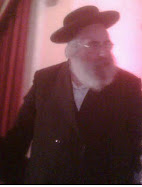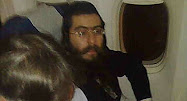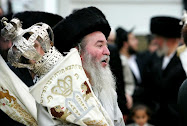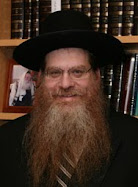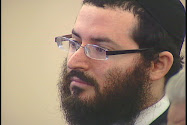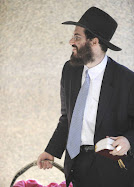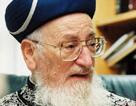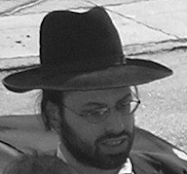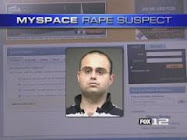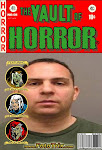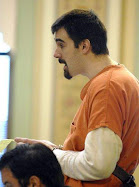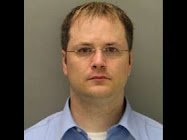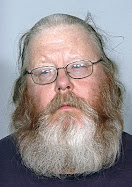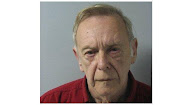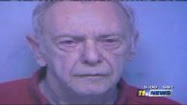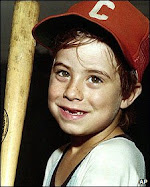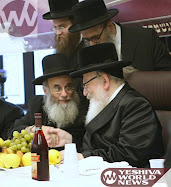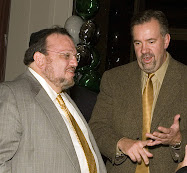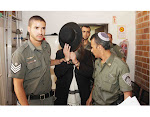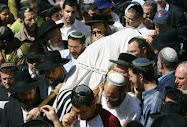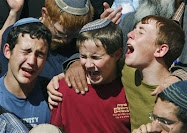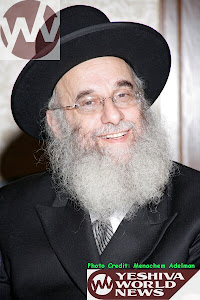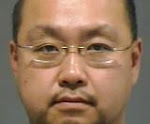Catholicism doesn't have a monopoly on child abuse scandals, as the ultra-Orthodox Jewish community has discovered
The uncovering of sexual abuse perpetrated by religious leaders in the Catholic church is mirrored within the ultra-Orthodox Jewish community. As with the Catholic church, where the abuse was
uncovered early on in the US, institutional child sexual abuse is starting to be prosecuted in New York. And as with the Catholic church, which has begun to
change its stance on prosecuting priests, ultra-Orthodox Jewish leaders are beginning to permit the reporting to police of these crimes. As with the Catholic church,
Jewish victim support groups and
advocates have brought these crimes to the public's attention. The question is whether, as with the Catholic church, this is far too little far too late.
A little known Jewish law called mesira, found in the Talmud with some scriptural support, forbids a Jew from reporting another Jew to the gentile authorities. The law was in response to non-Jewish governments whose courts were staffed by antisemites. According to Jewish leaders, those courts looked for any excuse to find against a Jew. Many rabbis took a rather dim view of gentile legal processes, advocating that their courts were flawed, antisemitic and less capable than Jewish courts. Mesira essentially allowed Jewish courts to retain control over all disputes, ensuring that religious law prevailed.
In today's society, where there are proper, transparent and just courts of law, the law of mesira has largely been abandoned. Most Jewish communities recognise the legal system of the countries where they live; saving relatively few disputes, mostly centring on religious issues such as divorce, for the Jewish courts. However, the ultra-Orthodox communities still use mesira to prohibit any Jew being reported to the non-Jewish authorities.
As can be imagined, this is a pretty dangerous stance to take, particularly in terms of violent criminals. Perpetrators of, for example, domestic violence, child abuse, or sexual crimes, are often protected by the ultra-Orthodox communities and dealt with "in-house". They are sometimes beaten up by the
self-appointed Jewish "police", and often moved to areas where there is no knowledge of their crimes.
Perpetrators of child sexual abuse within ultra-Orthodox Jewish communities have been afforded similar protection to Catholic priests. Rabbis have continued to teach, in their own or in new institutions.
Yehuda Kolko allegedly had his crimes covered up by the Yeshiva Torah Temima school where he taught for over 25 years. Communities have shielded fugitives, such as
Nachman Stal, who fled charges in Israel and was protected for almost a decade by the North London ultra-Orthodox community.
As with the Catholic church, silencing the victims has kept secret, at least from the wider public, ongoing abuse within ultra-Orthodox Jewish institutions. Various Jewish laws have been twisted and misused to threaten victims with divine retribution for reporting crimes. Families are told that their other children will not be given suitable matches for marriage, or won't be accepted by good schools, if the boat is rocked. Similar threats of communal ostracism were used by the Catholic church in Ireland to silence the many people who knew of abuse in Christian Brothers' institutions.
Within many closed, religious communities there is fear of communal repercussions, religious leaders, and ultimately of God. Fears are exploited to allow grave crimes to be covered up, and to continue within religious institutions. Motives of religious leaders may be hard to prove, but there are clear financial incentives as well as issues of power and control that have influenced the positions taken towards perpetrators of child sexual abuse.
There are huge financial implications for admitting abuse and permitting court cases. In the US alone, the Catholic church has paid over $2.5bn to victims. Little wonder then that ultra-Orthodox rabbis opposed New York's
Markey bill which sought to extend the statute of limitations for criminal and civil cases about child sexual abuse. Now that abuse is coming to light, the financial implications could be devastating for institutions that covered up allegations and continued to employ abusers.
Similarly, leaders, seeking retain a tight grip of control over their communities, covered up scandals to avoid schisms, splits or defections. Yet these tactics have backfired. In silencing victims and protecting perpetrators, these religious communities face a crisis beyond anything they could have imagined.
As in the Catholic church, things are starting to change in the ultra-Orthodox Jewish world. Top rabbis, such as Rav Elyashiv, have come out in support of reporting abuse to the police. Indeed, they have emphasised that prosecution is necessary to keep communities safe and to protect children. Self-appointed Jewish "police"
in Flatbush have now told their community to report all abuse directly to the gentile police. Clearly, the ultra-Orthodox Jewish world is learning from the recent spate of cases, the Catholic church's experience, and listening to the victims. But can it be enough to say that the institutions will change only once the scandals have broken, or is a Catholic-style crisis of faith about to hit the ultra-Orthodox Jewish community?
==========================================================================
http://blog.nj.com/njv_publicblog/2010/04/sexual_abuse_rampant_across_de.html
Sexual Abuse Rampant Across Denominations.
By Golumba
April 12, 2010, 4:54PM
FailedMessiah.com has done yeoman's work unfurling the hidden sex abuse in the Jewish community that's NOW going on, to the detriment of the children. This isn't about egregious abuse from 15 to 50 years ago, like the horrific Catholic history, but forums addressing crimes against New jersey children occuring NOW in Passaic, Lakewood and Teaneck. It's a familiar, but ghastly, routine: The victim reports the molestation to a rabbi, rather than face SHUNNING...not only for himself, but also for his entire family... by the whole community for bringing the crime to the attention of the police. When the rabbi takes the complaint of sexual abuse, the matter is covered up, handled "in house". Thanks to a new honesty, pedophile arrests are up 800% in Brooklyn, alone, amongst the Orthodox Jewish community.
In Lakewood, N.J., the "Rome" of Orthodox Judaism, the arrest of a Yeshiva teacher for molesting a young boy was a beginning, just last July. Nonetheless, pressure remains to let the child victims suffer and to clear all criminal abuse through a rabbi, and a closed rabbinical court. As one blogger noted, these religious leaders deny that "pedophilia is not a right of those in authority". In New Jersey, all matters that have been brought before a rabbinical court involving sexual abuse need to be brought to the attention of the police and the district attorney. This is an ongoing criminal conspiracy if rabbinical authorities are covering up crimes against children. Where's the Grand Jury?
Next: Brooklyn Orthodox sexual abuse and the good works of DA Charles "Joe" Hynes, a Catholic prosecutor with close ties to the new Orthodox reformers. A year ago he brought 26 sexual abuse cases against Yeshiva teachers, rabbis, camp counselors, merchants, and relatives of children. Yet, one Brooklyn rabbi cited Jewish law that calls for the killing of a Jew who informs on another Jew...even a pedophile. It gets worse.
=========================================================================
http://www.counterpunch.org/rosen04162010.html
A Case of Selective Journalism?
The New York Times vs. the Pope
By DAVID ROSEN
Since mid-February, the New York Times has led a systematic campaign exposing sex abuse scandals within the Catholic Church. The Times has run approximately four dozen front-page articles, follow-up stories and news reports as well as op-ed pieces and letters-to-the-editor on the sexual abuse of young people by Catholic prelates in the U.S., Europe and other parts of the globe. As America’s news-source of record, its attentions to this issue has been picked up by other media and also led to additional local follow-up reports. The Times’ reporting has also led to denunciations by the Vatican and others.
However, reading the Times’ coverage, it is striking that comparable issues of sexual abuse have not received the same sustained, in-depth, often front-page and editorial attention. Why has the sexual abuse of female soldiers in the military, of youthful inmates in the nation’s prison system, of boy scouts, of teen prostitutes, of Mormon girls and of youths within the Brooklyn Hassidic community not received the same scale of reporting? Indeed, these issues have been covered in occasional daily news reports. But why have they not received a comparable degree of attention?
As evident by what it chooses to focus its investigative resources on, the Times, like other information organizations, articulates an often-unstated political perspective. Its reprehensible policy of backing the Bush

administration’s illegal invasion of Iraq, particularly through its publication of Judith Miller’s false reports, is illustrative of such unstated political decision-making masquerading as journalism. A more recent case is its cheerleading coverage of the rightwing campaign against Acorn and the disingenuous mea culpa by its Public Editor, Clark Hoyt.
A reader of the Times can appreciate the in-depth reporting about sexual abuse within the Church: it is a shameful practice that needs to be fully exposed. However, one must question the underlying agenda or intentionality of this campaign, especially in light of the fact that similar attention has not been given to other pressing sexual abuse issues that take place on a daily bases.
* * *
Word about America’s gravest religious sex scandal involving Catholic priests began to emerge in the mid-1980s, but did not fully grip the nation’s attention until the late-‘90s. And the New York Times did not break the story.
Sexual abuse of women and youthful male and female parishioners by individual Catholic clergy has taken place since time immemorial. However, with the rise of post-‘60s political environment, abuse finally came under intense public scrutiny. According to journalist Carl Cannon, Louisiana writer Jason Berry was the first to begin to raise the issue of sexual abuse by priests and the Church’s cover-up. The issue began to generate national attention when “The Phil Donahue Show” covered it on St. Patrick’s Day, 1988.
By the early-‘90s, momentum was building against the Church’s cover-up when indictments were handed down against John Porter for molesting twenty-eight boys in Fall River, MA, and John Geoghan, who molested young boys from at least 1972 but was not defrocked until 1998. In 2001, Kristen Lombardi, writing in the “Boston Phoenix,” directly tied Geoghan to the local Catholic hierarchy, naming Boston Cardinal Bernard Law as complicit in the cover-up. Geoghan was eventually convicted of child molestation and, in 2003, was murdered in prison; Law resigned in disgrace in 2005 and moved to the Vatican where he was rewarded with a high post in the Church bureaucracy.
Pope Benedict XVI visited the U.S. in the spring of ’08, the first visit by a pope since the Church pedophile scandal broke. He came, in part, to reassure the millions of American Catholics who were deeply disturbed by the Church hierarchy’s role in the cover-up. At a well-publicized but private get-together, he met with victims of the abuse who came from two groups, Survivors Network of those Abused by Priests (SNAP) and Voice of the Faithful. According to SNAP’s Edward Lozzi, “the meeting was forced upon the Pope by the victims.” He adds:
Pope Benedict was very uncomfortable meeting with the fiverepresentative victims who had been raped by priests and had their lives and families changed forever. This was a private meeting of course. The Pope was visibly embarrassed and in agony throughout the whole encounter.
Lozzi concludes, quite pessimistically, “… Ultimately that April meeting was just a publicity stunt by Benedict.”
Pope Benedict, born Joseph Ratzinger, has lived nearly his entire adult life behind the walls of the Church. At age 12, he enrolled in a seminary near where he grew up in Traunstein, Germany. In 1945, after demobilizing from the German military and a brief internment as a POW, he entered Catholic seminary in Freising and was ordained in 1951. He became Archbishop of Munich and Freising in 1977 and, moving up the Church hierarchy, became Prefect of the Congregation of the Doctrine of the Faithful in 1981. In 1998, Cardinal Ratzinger became Vice-Dean of the College of Cardinals and was elected Pope in 2005.
The Church’s Congregation of the Doctrine of the Faithful was traditionally known as the Supreme Sacred Congregation of the Roman and Universal Inquisition. It was formally established in 1542 and, for the last four-and-a-half centuries, has enforced official Church doctrine. In the Church’s heyday, it undertook trials for heresy against both Protestants and Catholic reformers, including Galileo. As Cardinal and subsequently as pope, Ratzinger has steadfastly moved to maintain orthodox control of the Church’s bureaucracy and increasingly diverse followers.
In particular, the pope has systemically moved to reverse the changes instituted in Vatican II. These actions included: a return to the Latin mass; lifting of the excommunications of four reactionary bishops of the Priestly Fraternity of St. Pius X; moving to canonizing Pius 12 (who abandoned the Jews during WWII); and campaigning against Latin America priests sympathetic to liberation theology as exemplified by the recent appointment of the conservative (and Opus Dei member) archbishop of San Antonio, Mexiccan-born Jose Gomez, as archbishop of Los Angeles. Some within the Church wonder if he will overturn Vatican II’s most important action and reinstate the charge that Jews were responsible for the killing of Jesus.
The pope continues to appear uncomfortable and embarrassed by the pedophile scandal, unable to grasp the scandal’s full moral and legal consequences. While Benedict has, up until recently, appeared to take seriously sexual-abuse charges against the clergy, he is ultimately a faithful follower of the traditions of the Inquisition. His primary duty seems to be to protect those who adhere to Church dogma even if they break secular laws. As such, the indiscreet actions of loyal servants of the bureaucracy are hushed up, offenders shifted to another parish and abusers permitted to continue to serve the Church. Sadly, it appears the neither the pope nor his loyal minions really comprehend (or care about) the institutional failure at the heart of the scandal: where Vatican II sought to open the Church to its faithful, Benedict seeks to limit accountability to only those who accept faithful obedience.
* * *
A review of Google listings of New York Times articles about the Catholic Church sexual abuse as well as sex scandals and related topics provides an invaluable insight into the newspaper’s apparent coverage policies. Like most media outlets, the Times gave extensive coverage to the misadventures of Tiger Woods, John Edwards and Eliot Spitzer, among many other sex scandals involving celebrities and politicians.
The Times also reports on a wide array of other sex-related issues and a few are given significant coverage. Like other media outlets, the Times extensively covered the Texas polygamy scandal involving the Fundamentalist Church of Jesus Christ of Latter Day Saints (FLDS). From February thru June 2008, it ran about two-dozen articles, many informative accounts, about this religious cult and the ham-fisted efforts by Texas law enforcement to break it. Sadly, since the original controversy, the Times has given no real attention to this subject. [see “The New Texas Two-Step: Polygamy & State Regulation of Sexual Life,” CounterPunch, April 19-20, 2008]
Unfortunately, its coverage of most sex-related issues tends to be more episodic, with an occasional news report. Examples of such coverage include the use of rape as a military weapon in the Congo; the sexual abuse of boy scouts by scoutmasters; the sexual abuse of imprisoned young people; and the failed policies relating to sex offenders. These stories are often tied to a horrendous event, the issuance of an important study or an on-going court proceeding.
An illuminating example of this type of reporting involves the increasing incidence of rape and sexual abuse of U.S. female military personnel. The Times recently reported on the Defense Department’s release of its annual report “Defense Task Force on Sexual Assault in the Military Services.” [see “The Third Front: Sexual Assault in the U. S. Military,” CounterPunch, March 19-21, 2010] While the Times has addressed this issue repeatedly over the last decade, it has, like its coverage of Mormon polygamists, never undertaking a rigorous or in-depth investigation of the institutional sexism at their heart of the military.
The Times’ coverage of sexual abuse and a religious group is revealing. In March 2010, “Rabbi” Baruch Lebovits, a Brooklyn Hasidic Jew, was found guilty on eight of 10 counts of sexually molesting Jewish teens in 2004 and 2005. Lebovits, was the owner of a Borough Park travel agency and faces up to seven years in prison. This story was not reported by the New York Times but by the New York Daily News.
Sadly, the Times has offered little coverage of the mushrooming sexual abuse scandal involving Hasidic Jews in Brooklyn. Hasidics are ultra-orthodox Jewish sects such as the Satmars, Vizhnitzs and Bobovs. In October 2009, like other New York print and media outlets, it covered Brooklyn District Attorney Charles Hynes’ press conference in October 2009. As it restated from a press release, over the preceding year, 26 Orthodox Jewish “yeshiva teachers, rabbis, camp counselors, merchants and relatives of children” were arrested and eight were convicted; 18 still awaited trial. [NY Times, October 13, 2009] Unfortunately, the cases involving Rabbis Avrohom Reichman and Yehuda Kolko, yet the 26 originally arrested by DA Hynes, have not been reported.
The Times can take an adversarial position with regard sex-related issues. During the summer and fall of 2008, it ran a series of articles regarding the horrendous treatment of teen prostitutes by the New York police and Court system and the need to pass the Safe Harbor Act for Exploited Children then pending before the State legislature. It also ran an editorial supporting Gov. David Paterson’s signing of the law. [see
“Teen Prostitution in America: Looking for Safe Harbor,” CounterPunch, August 2-3, 2008.]
The New York Times has devoted extensive investigative resources and page space to exposing the sins of the Catholic Church and its sclerotic leadership to cover-up the long-endemic pedophilia scandal. This reporting has been valuable and one can hope for more of it. But one must ask why such extensive selective journalism has been devoted to this one sinful subject? Why has not similar attention been paid to the other equally troubling examples of sexual abuse of the young, of women and other powerless people, many living in the Times’ very backyard?









































